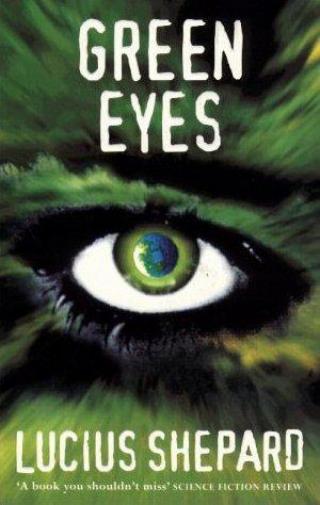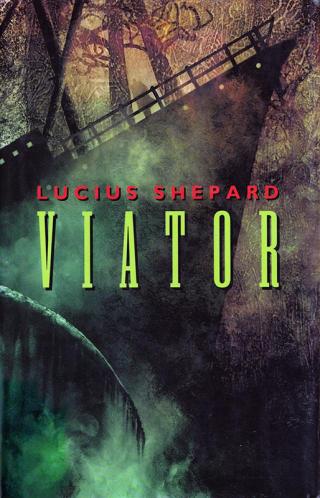
Аннотация
Life the second time around is short, strange and terrifying to the awakened. One "zombie", victim of a bizarre scientific obsession, breaks away, leaving a trail of muder and miracle as he flees the Project and the horror his "life" hasbecome.
Green Eyes is a book that has no respect for genre. Throughout its course, the novel spans the whole of the nebulous speculative fiction genre, taking on the appearance of science fiction, fantasy and horror all in turn. Perhaps the best way to describe it is as American Gothic. Or even as a love story.
If this sounds like an alarming mish-mash, don't worry, Lucius Shepard blends these ingredients together with consummate skill. If you go to this book with preconceptions, you will inevitably find them overturned but if you just go with the flow, you will find that Shepard knows what he is doing.
Though no synopsis can do the story justice (the back cover certainly fails), it is possible to sketch out the basic elements of the setup. By using bacteria extracted from graves, a small group of scientists have been able to reanimate corpses. These zombies (or Bacterially Induced Artificial Personalities to use the jargon) are being studied because they seem to exhibit heightened awareness.
One side effect of the treatment is that bioluminescent threads form in the eyes of the zombies, causing the glowing identification mark of the title. A more extreme side effect is that the newly awakened zombies do not live very long, sometimes as little as days. It is this that causes one zombie, Donnell, to escape from the lab with the help of his therapist, Jocundra.
Psuedo-scientific zombies are a pretty uninspiring basis for a novel, bringing to mind a sub-par episode of The X-Files. However Shepard uses this as a jump-off point for something much more interesting. Donnell discovers that he, and the other zombies, can manipulate electromagnetic fields and this paves the way for the developments of the rest of the novel.
To begin with, the novel is mostly concerned with the burgeoning relationship between Donnell and Jocundra. It starts unpromisingly; Donnell is understandably sullen and introverted. Even in their clinical relationship, there is a spark of sexual attraction though. As soon as they leave the suffocating confines of the lab, things take off. On the road, the relationship progresses to friendship, intimacy and finally love. It is a progression that many authors seem to believe requires only a few quick join-the-dots passages but the benefits of a deep examination are abundantly clear here.
Green Eyes takes place in the back-country of Louisiana, a perfect example of pathetic fallacy. Fecund and decadent, swampy, sweaty and sordid, it mirrors the story. This evocative setting is coupled with Shepard's impressive prose. He is able to assume any voice, be it scholarly, poetic or anything between. It is lyrical, richly descriptive and brimming with imagery. He also displays an acute ear for dialogue.
Though the focus of the novel remains constant, centred on Donnell and Jocundra's relationship, everything else keeps shifting. Every time the reader begins to think they know the direction the novel is going to go in, they find the emphasis changes. Importantly, this is never an alienating experience.
At times, the novel seems as directionless as a road movie, an episodic cruise, but at the end we find that Shepard has always been in control of the story and everything comes together. Likewise when things start to get really strange (as they soon do), they never become absurd. This technical mastery of a plot, that could easily have run away with itself, is all the more impressive considering it is a debut novel.
Copyright © 2002 Martin Lewis
© Ace Science Fiction Books, New Ace SF Special, First published May 1, 1984

















Комментарии к книге "Green Eyes"